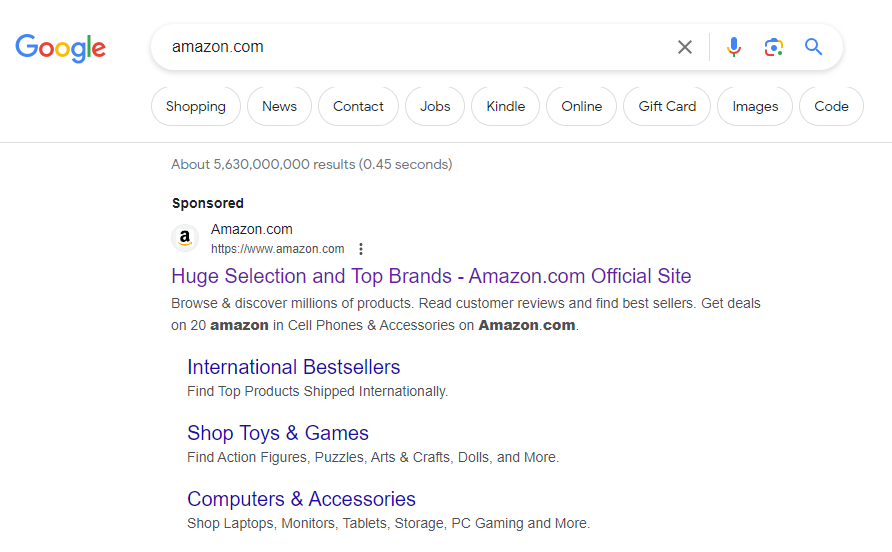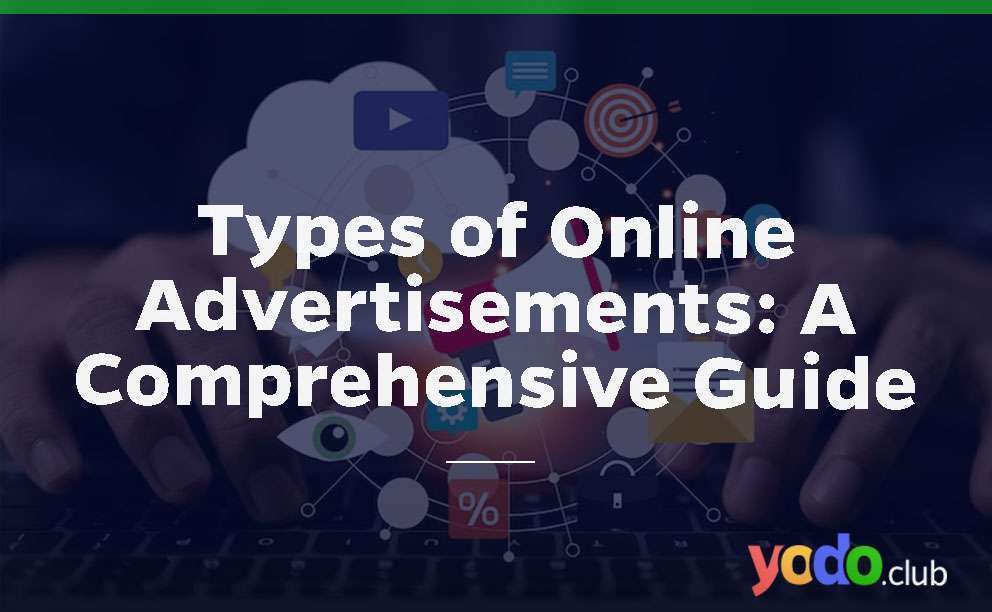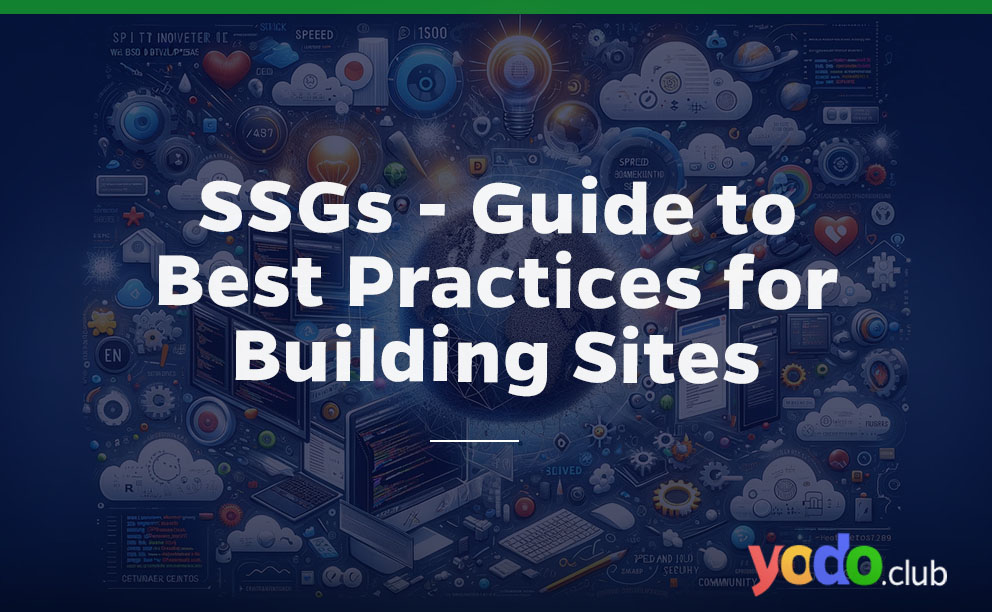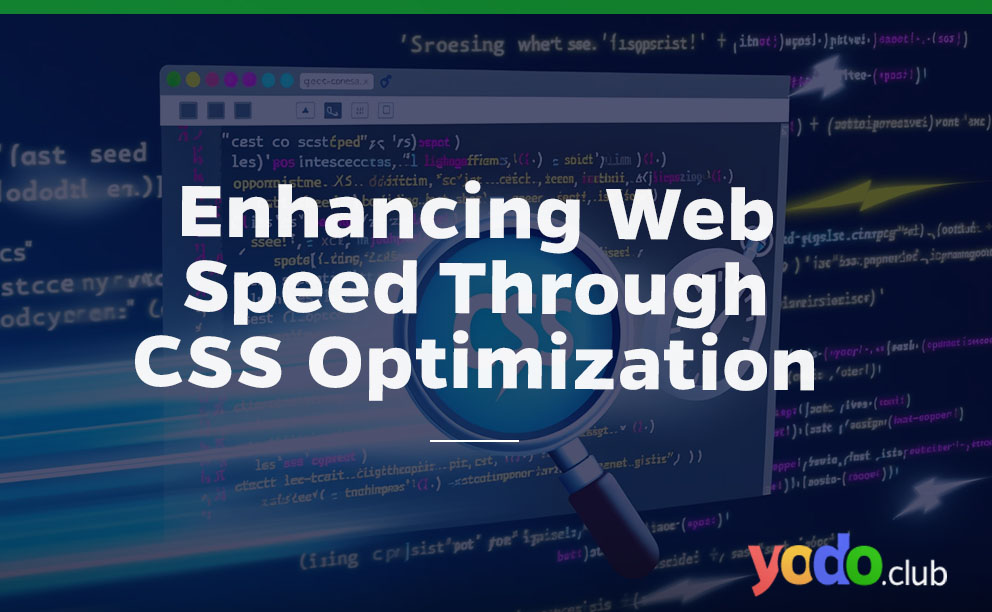Have you ever wondered how online advertisements work? With so many different types of ads popping up on your screen, it can be overwhelming to understand the different formats and strategies behind them.
Online advertising has become essential for businesses to reach their target audience in today’s digital age. From banner ads to social media promotions and search engine marketing, companies promote their products and services online in various ways.
If you want to learn about online advertising thoroughly, you’ve come to the right place. This comprehensive guide will walk you through the different types of online advertisements and how they work. By the end of this article, you’ll better understand how businesses use online ads to capture your attention and drive sales.
That will ultimately help you find which advertisement type is right for your business and how to create a successful campaign.
Table of Contents
What is Online Advertising?
Online advertising is an increasingly popular form of marketing for businesses. Companies can efficiently get their brands’ messages out to more people by targeting audiences based on their specific interests and demographics.
Online advertisements can include:
-
- A text-based, interactive display.
- Layered ads.
- Hyperlinks within a website.
- Email campaigns with paid search advertising using terms and phrases related to a product or service.
With the ability to track the effectiveness of ad campaigns through metrics such as click rate or conversion data, advertisers can quickly adjust their methods to optimize results.

Importance of Online Advertisements
They play a pivotal role in the success of businesses. With the increasing reliance on the internet for information, entertainment, and shopping, online advertisements have become indispensable tools for businesses to capture the attention of their target audience.
Here are some key reasons why online advertisements are of the utmost importance:
-
- Reach and Visibility: Online advertising enables businesses to reach a wider audience, regardless of location. With the ability to target specific demographics, interests, and behaviors, businesses can ensure that their advertisements are shown to the right people at the right time, increasing their visibility among potential customers.
- Brand Awareness and Recognition: Online ads allow businesses to create brand awareness and recognition by consistently exposing their brand to their target audience. By leveraging different types of online ads, businesses can establish their brand identity, build trust, and foster brand loyalty among potential customers.
- Cost-effective Advertising: Compared to traditional forms of advertising, online advertisements can be more cost-effective, as businesses have the flexibility to set their budgets and optimize their campaigns based on performance. Online advertisements also provide valuable insights and data on campaign performance, allowing businesses to make data-driven decisions and maximize their return on investment (ROI).
Types of Online Advertisements
There are various types of online ads that businesses can leverage to achieve their marketing objectives. Let’s take a closer look at some of the most common types of online advertisements:
-
- Display Ads: These are visual advertisements that appear on websites, apps, or social media platforms in the form of banners, images, or videos. Display ads can effectively create brand awareness, capture attention, and drive website traffic.
- Search Engine Ads: Search engine ads, also known as pay-per-click (PPC) ads, appear at the top or bottom of search engine results pages (SERPs) when users search for relevant keywords. Search engine ads can help businesses increase their visibility, drive targeted traffic to their website, and generate leads or sales.
- Social Media Ads: Social media ads appear on social media platforms such as Facebook, Instagram, Twitter, LinkedIn, and YouTube. Social media ads can build brand awareness, engage with customers, and drive website traffic or conversions.
- Video Ads: Video ads appear in online videos, such as pre-roll ads that play before a video starts or mid-roll ads that play during a video. Video ads can effectively convey a brand’s message, tell a story, or showcase a product or service.
- Influencer marketing is a type of online advertising where businesses collaborate with influencers, which are popular individuals or content creators on social media, to promote their products or services. Influencer marketing can be an effective way to reach a targeted audience and leverage the influence and trust of the influencer.
- Retargeting Ads: Retargeting ads target users who have previously visited a website or shown interest in a product or service but did not convert. Retargeting ads can help businesses re-engage with potential customers and encourage them to complete their purchase or take the desired action.

1) Display Ads
Display ads are visual advertisements that appear on websites, apps, or social media platforms in the form of banners, images, or videos. They are designed to capture the attention of users and convey a brand’s message or promote a product or service. Here’s a closer look at how display ads work:
Formats of Display Ads: Display ads can come in various formats, including:
Banner Ads
Banner ads are rectangular or square advertisements typically placed at the top, bottom, or sides of a website or app. They can contain images, text, and multimedia elements and are clickable, leading users to the advertiser’s website or landing page when clicked.
Pop-up Ads
Pop-up ads open in a new window or appear on top of the current webpage. They can be intrusive and are often used to capture users’ attention and prompt them to take action.
Native Ads
Native ads are advertisements that blend in with the content of a website or app, appearing as if they are part of the regular content. They are less intrusive and provide a more seamless user experience.
Advantages
-
- Increased Visibility: Display ads can reach a wide audience as they are typically placed on popular websites or apps with high traffic, increasing the advertisement’s visibility.
- Brand Awareness: Display ads can help create brand awareness by showcasing a brand’s logo, messaging, and visuals, leaving a lasting impression on users.
- Targeting Options: Display ads provide targeting options, allowing advertisers to display their ads to specific demographics, interests, and behaviors, ensuring that the ads are shown to the right audience.
Disadvantages
-
- Ad Blindness: Users may develop “ad blindness,” where they ignore or block display ads due to their familiarity with online advertisements, reducing the effectiveness of the ads.
- Ad Blockers: Many users use ad blockers to block display ads, which can result in the ads not being shown to a significant portion of the target audience.
- Intrusiveness: Some display ads, such as pop-up ads, can be intrusive and disrupt the user experience, leading to negative perceptions.
Examples of Successful Display Ad Campaigns
-
- Nike’s “Just Do It” Campaign: Nike’s display ad campaign featured powerful visuals, compelling messaging, and a strong call to action, inspiring users to take action and engage with the brand.
- Coca-Cola’s “Share a Coke” Campaign: Coca-Cola’s display ad campaign featured personalized ads with users’ names on the cans, creating a sense of personalization and engagement among users.
- Apple’s “Shot on iPhone” Campaign: Apple’s display ad campaign showcased stunning user-generated photos taken with iPhone cameras, highlighting the quality of the camera and encouraging user-generated content.

2) Search Engine Ads
Search engine ads are a form of online advertising that appears on search engine results pages (SERPs) when users search for specific keywords or phrases. These ads are typically displayed at the top or bottom of the SERPs, labeled as “sponsored” or “ad,” and are designed to match the user’s search intent.
Here’s a closer look at how search engine ads work:
Pay-Per-Click (PPC) Advertising
Search engine ads operate on a pay-per-click (PPC) model, where advertisers only pay when users click on their ads. This allows for more targeted and cost-effective advertising, as advertisers are charged only when users show an active interest in their ads by clicking on them.
Keyword Targeting and Ad Bidding
Advertisers select keywords or phrases relevant to their products or services, and their ads are triggered to appear when users search for those keywords. Advertisers bid on keywords, setting a maximum bid they are willing to pay for each click on their ad. The ads are ranked based on a combination of bid amount and ad quality, with higher-ranked ads appearing at the top of the SERPs.
Popular Search Engine Ad Platforms
-
- Google Ads is the most widely used search engine ad platform, allowing advertisers to create and manage ads on Google’s search results pages, as well as on Google’s partner websites and apps.
- Bing Ads is the advertising platform for Microsoft’s search engine, Bing. It allows advertisers to create and manage ads on Bing’s and Yahoo’s search results pages since Bing powers Yahoo’s search engine.
Advantages
-
- High Intent Audience: Search engine ads target users who are actively searching for specific keywords or phrases, indicating a high intent to find information or make a purchase, making them a highly relevant and engaged audience.
- Cost-effective: The PPC model of search engine ads allows advertisers to have more control over their budget as they only pay when users click on their ads, ensuring that the budget is spent on users who are genuinely interested in their products or services.
- Targeting Options: Search engine ads provide various targeting options, such as geographic targeting, demographic targeting, and device targeting, allowing advertisers to reach their desired audience effectively.
Challenges
-
- Competition: Search engine ads are highly competitive, with multiple advertisers bidding for the same keywords, driving up the costs and making it challenging to achieve top ad rankings.
- Ad Fatigue: Users may become exhausted with ads on search results pages, leading to ad blindness or reduced engagement with ads.
- Ad Rank Factors: Ad quality, relevance, and landing page experience are important factors in determining ad rank, which may require ongoing optimization and management to maintain top positions.

3) Social Media Ads
Social media ads are a type of online advertising that appears on social media platforms, leveraging the vast user base and engagement on these platforms to reach and engage with potential customers. Here’s a closer look at social media ads:
Types of Social Media Ads
Social media ads can take various forms, such as sponsored posts on platforms like Facebook, promoted tweets on Twitter, and ads on visual platforms like Instagram, Pinterest, and Snapchat. These ads seamlessly blend into the user’s social media feed and appear as organic content.
Social media advertising offers robust targeting options, allowing advertisers to hone in on their desired audience based on demographic information, interests, behaviors, and location. This enables highly targeted and personalized advertising, ensuring the ads are shown to the most relevant audience.
Advantages of Social Media Ads
-
- Wide Reach and Engagement: Social media platforms have billions of active users worldwide, providing advertisers with massive reach and engagement potential.
- Customization and Flexibility: Social media ads can be highly customized, with options to set specific campaign objectives, budgets, and ad formats. They can also be easily adjusted or optimized in real time based on campaign performance.
- Rich Media and Creative Formats: Social media ads allow for rich media, such as images, videos, carousels, and interactive elements, enabling creative and visually appealing ad experiences.
Limitations
-
- Ad Saturation: Social media platforms can be highly saturated with ads, leading to ad fatigue and reduced user engagement.
- Ad Blocking and Ad Avoidance: Users may utilize ad-blocking tools or skip ads, which can reduce the effectiveness of social media ads.
- Platform-Specific Limitations: Each social media platform has its own set of ad policies, limitations, and targeting options, which may require additional effort and management to optimize campaigns accordingly.
Examples of Successful Social Media Ad Campaigns:
-
- Coca-Cola’s “Share a Coke” Campaign: Coca-Cola launched a campaign featuring personalized labels on their bottles and cans, encouraging users to share their Coke experience on social media with the hashtag #ShareACoke. The campaign generated widespread user-generated content and engagement on social media, leading to increased brand awareness and sales.
- Airbnb’s “We Accept” Campaign: Airbnb launched a campaign promoting inclusivity and acceptance, featuring ads showcasing diverse families and individuals. The campaign resonated with its target audience and received positive feedback, leading to increased brand loyalty and advocacy.
4) Video Ads
They’ve become increasingly popular in online advertising due to their ability to deliver engaging and immersive content to audiences.
Video ads are advertisements that appear in video format, typically before (pre-roll), during (mid-roll), or after (post-roll) online video content. They can be displayed on various platforms, including video-sharing websites, social media platforms, and streaming services.
YouTube, owned by Google, is the largest and most popular video-sharing platform, offering extensive opportunities for video advertising. Facebook also offers video ad options, including in-feed videos and Stories.
Advantages
-
- Increased Engagement: Video ads can captivate audiences with dynamic visuals, motion, and sound, resulting in increased engagement and longer viewing times than other ad formats.
- Brand Awareness: Video ads can effectively convey brand messages, stories, and emotions, creating memorable experiences that enhance brand awareness and recall.

Examples of Successful Video Ad Campaigns:
-
- Old Spice’s “The Man Your Man Could Smell Like” Campaign: Old Spice created a humorous and memorable video ad featuring a confident and charismatic character, quickly gaining viral traction and generating millions of views. The campaign successfully revitalized the brand and increased sales.
- Always “Like a Girl” Campaign: Always launched a powerful video ad campaign challenging gender stereotypes and promoting female empowerment. The campaign gained widespread attention and sparked conversations about gender equality, resulting in increased brand relevance and positive sentiment.
5) Influencer Marketing
Influencer marketing has emerged as a popular strategy in online advertising, leveraging the popularity and influence of social media influencers to promote products or services. It involves partnering with influencers, who are individuals with a significant following and influence on social media platforms, to promote products or services. Influencers may create sponsored posts, videos, or reviews to promote brands and engage their audiences.
Their role is to build brand awareness, increase product visibility, and drive consumer engagement. They often have a loyal and engaged following, which can result in higher trust and credibility than traditional advertising methods.
Benefits and Challenges
-
- Authenticity and Trust: Influencer marketing allows brands to tap into the authenticity and trust that influencers have built with their audiences, which can result in higher engagement and conversion levels.
- Targeted Reach: Influencers often have a specific niche or target audience, allowing brands to reach a highly targeted and relevant consumer base.
- Creative Content: Influencers are known for their creativity and unique content creation abilities, which can result in engaging and authentic promotional content.
Challenges: Influencer marketing also comes with challenges, such as finding the right influencers, managing relationships, and ensuring compliance with advertising regulations and guidelines.
Examples of Successful Influencer Marketing Campaigns:
-
- Nike’s Collaboration with Cristiano Ronaldo: Nike partnered with a famous footballer for an influencer marketing campaign, leveraging his popularity and influence to promote their products. The campaign generated millions of engagements and increased brand visibility.
- Sephora’s #SephoraSquad Campaign: Sephora launched an influencer marketing campaign called #SephoraSquad, where they collaborated with a diverse group of influencers to create content about their products. The campaign resulted in increased brand awareness, engagement, and user-generated content.
6) Retargeting Ads
Retargeting ads, also known as remarketing ads, are a type of online advertising that targets users who have previously interacted with a website or app but have not completed a desired action, such as making a purchase or filling out a form.
These ads work by placing a tracking pixel on a website or app, which allows advertisers to identify users who have visited the site or app. These users are then shown targeted ads as they browse other websites or apps, encouraging them to return and complete the action.
Concept of Remarketing
Remarketing involves targeting users who have previously shown an interest in a website or app by visiting it or taking certain actions but have not converted. Retargeting ads aim to re-engage these users and remind them of the product or service they showed an interest in.
Advantages
-
- Higher Conversion Rates: Retargeting ads can have higher conversion rates than traditional display ads, as they target users who have already shown an interest in the product or service.
- Increased Brand Recall: Retargeting ads can help reinforce brand recall and awareness by repeatedly showing ads to users who have already engaged with the brand.
- Customization and Personalization: Retargeting ads can be customized and personalized based on users’ past interactions, allowing for more relevant and targeted messaging.
Challenges
-
- Ad Fatigue and Privacy Concerns: Retargeting ads may lead to ad fatigue if users continuous shows the same ads and can also raise privacy concerns as they track users’ online behavior.
Examples of Successful Retargeting Ad Campaigns:
-
- Amazon’s Retargeting Campaign: Amazon uses retargeting ads to show personalized product recommendations to users who have previously viewed or added products to their cart but did not complete the purchase. This has resulted in increased conversions and revenue for Amazon.
- Booking.com’s Abandoned Cart Retargeting: Booking.com uses retargeting ads to target users who abandoned their booking process, showing them personalized ads with the same properties or destinations they were interested in. This has helped Booking.com recover lost bookings and increase revenue.
Conclusion
Online advertisements are crucial in today’s digital landscape for businesses to reach their target audience and achieve their marketing goals. This article has discussed various types of online advertisements, including display ads, search engine ads, social media ads, video ads, influencer marketing, and retargeting ads. Each type of online advertisement has unique features, advantages, and limitations. So you must choose the right online advertising type based on your specific business goals and target audience.






 & Passion.
& Passion.